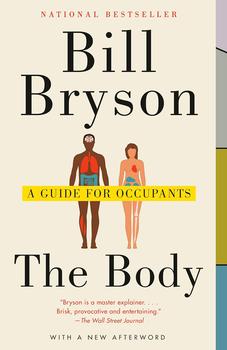Summary | Excerpt | Reviews | Beyond the Book | Readalikes | Genres & Themes | Author Bio

Critics' Opinion:
Readers' Opinion:
First Published:
Oct 2019, 464 pages
Paperback:
Jan 2021, 464 pages
 Book Reviewed by:
Book Reviewed by:
Kim Kovacs
Buy This Book
The great dream was to transplant a heart, but in many places it faced a seemingly insuperable obstacle: a person could not be declared dead until his heart had been stopped for a specified period, but that was all but certain to render the heart unusable for transplant. To remove a beating heart, no matter how far gone the owner was in all other respects, was to risk prosecution for murder. One place where that law did not apply was South Africa. In 1967, at exactly the time that René Favaloro was perfecting bypass surgery in Cleveland, Christiaan Barnard, a surgeon in Cape Town, attracted far more of the world's attention by transplanting the heart of a young woman fatally injured in a car accident into the chest of a fifty-four-year-old man named Louis Washkansky. It was hailed as a great medical breakthrough, though in fact Washkansky died after just eighteen days. Barnard had much better luck with his second transplant patient, a retired dentist named Philip Blaiberg, who survived for nineteen months.*
Following Barnard, other nations moved to let brain death be used as an alternative measure of irreversible lifelessness, and soon heart transplants were being attempted all over, though nearly always with discouraging results. The main issue was an absence of a wholly reliable immunosuppressive drug to deal with rejection. A drug called azathioprine worked sometimes but couldn't be relied on. Then, in 1969, an employee of the Swiss pharmaceutical company Sandoz named H. P. Frey, while on holiday in Norway, collected soil samples to take back to the Sandoz labs. The company had asked employees to do so when traveling in the hope that they would find potential new antibiotics. Frey's sample contained a fungus, Tolypocladium inflatum, which had no useful antibiotic properties but proved excellent at sup-pressing immune responses—just the thing needed to make organ transplants possible. Sandoz converted Herr Frey's little bag of dirt, and a similar sample subsequently found in Wisconsin, into a best-selling medicine called cyclosporine. Thanks to it and some associated technical improvements, by the early 1980s heart transplant surgeons were managing success rates of 80 percent, an extraordinary achievement in a decade and a half. Today some four to five thousand heart transplants are performed globally each year, with an average survival time of fifteen years. The longest-surviving transplant patient so far was the Briton John McCafferty, who lived thirty-three years with a transplanted heart before dying in 2016 aged seventy-three.
Incidentally, brain death turned out to be not as straightforward as originally thought. Some peripheral parts of the brain, we now know, may live on after all the rest has grown still. At the time of this writing, that is the issue at the center of a long-running case involving a young woman in the United States who was declared brain- dead in 2013 but who has continued to menstruate, a process that requires a functioning hypothalamus—very much a key part of the brain. The young woman's parents argue that anyone with even part of the brain functioning cannot reasonably be declared brain-dead.
As for Christiaan Barnard, the man who began it all, success rather went to his head. He traveled the world, dated movie stars (Sophia Loren and Gina Lollobrigida notably), and became, in the words of someone who knew him well, "one of the world's great womanizers." Even worse for his reputation, he made a fortune claiming rejuvenative benefits for a range of cosmetics that he most assuredly knew were bogus. He died in 2001, aged seventy-eight, of a heart attack while enjoying himself in Cyprus. His reputation was never again quite what it had been.
Remarkably, even with all the improvements in care, you are 70 percent more likely to die from heart disease today than you were in 1900. That's partly because other things used to kill people first, and partly because a hundred years ago people didn't spend five or six hours an evening in front of a television with a big spoon and a tub of ice cream. Heart disease is far and away the Western world's number one killer. As Michael Kinch has written, "Heart disease kills about the same number of Americans each year as cancer, influenza, pneumonia, and accidents combined. One in three Americans dies of heart disease and more than 1.5 million suffer a heart attack or stroke each year."
Excerpted from The Body by Bill Bryson. Copyright © 2019 by Bill Bryson. All rights reserved. No part of this excerpt may be reproduced or reprinted without permission in writing from the publisher.





The House on Biscayne Bay
by Chanel Cleeton
As death stalks a gothic mansion in Miami, the lives of two women intertwine as the past and present collide.

The Flower Sisters
by Michelle Collins Anderson
From the new Fannie Flagg of the Ozarks, a richly-woven story of family, forgiveness, and reinvention.

The Funeral Cryer by Wenyan Lu
Debut novelist Wenyan Lu brings us this witty yet profound story about one woman's midlife reawakening in contemporary rural China.
Your guide toexceptional books
BookBrowse seeks out and recommends the best in contemporary fiction and nonfiction—books that not only engage and entertain but also deepen our understanding of ourselves and the world around us.